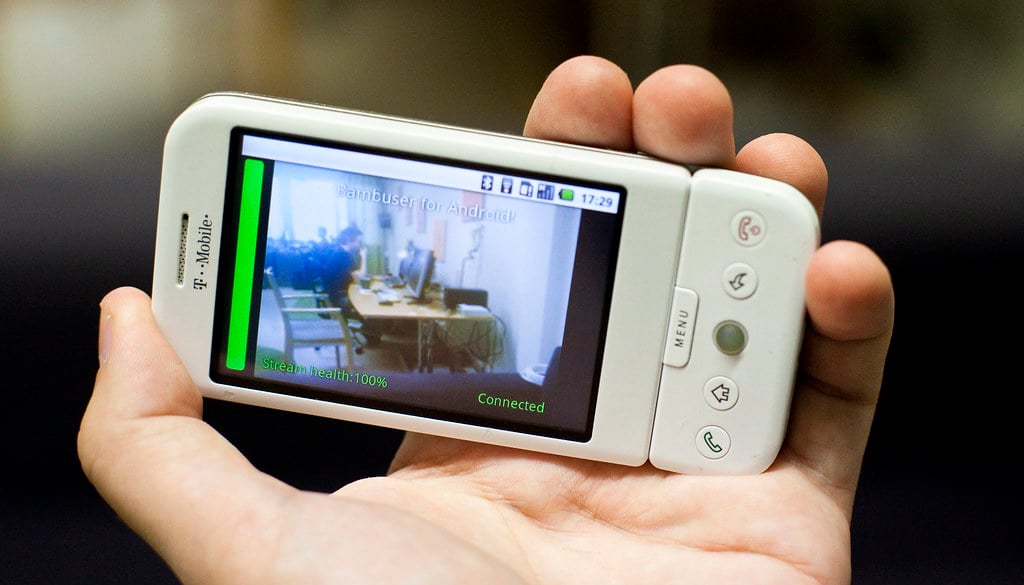More than 75% of the smartphones available in the market run Android OS as of May 2019. Apple’s iOS comes in second place with a HUGE gap with just 22.7% share. This goes on to show the dominance of Android globally. But when did it all start? Some might say that it all started with Google’s acquisition of Android back in 2005. But I would say it all started with one phone, the HTC Dream, the world’s first Android smartphone.

The HTC Dream aka HTC G1 or T-Mobile G1 (US) was the first ever phone to ship with Android. The phone was aptly named – the Dream because it was set to revolutionize the smartphone market. Android brought in one unique aspect to the smartphone industry – open source, which wasn’t common in OSes back in September 2008. Symbian, iPhone OS, and Blackberry OS were the dominant players back then. Symbian powered the Nokia phones, iPhone OS powered the Apple iPhones, and Blackberry OS powered the Blackberry phones. But what about those who didn’t want to invest a lot in their own operating system? This is where Android and its open source nature came to the rescue.
HTC didn’t have a proprietary OS. It did rely on Microsoft’s Windows Mobile-based PDA’s before the HTC Dream but it was looking for an operating system that could suit its needs. See, back then, HTC was one of the largest smartphone makers in the world. Google’s Android looked promising and was unlike other proprietary operating systems back then. It made sense for HTC to give Android a try.
The result was the HTC G1. Apart from running Android OS, the phone also came with 3G support, which was a really big deal back then. This meant that the G1 aka Dream went head-on against Apple’s iPhone 3G.
While both were smartphones that focused on providing high-speed 3G network connectivity, their designs were quite opposite. The iPhone 3G was sleek and beautiful, while the HTC Dream was bulky, heavy, and chunky.

The HTC Dream came with a plastic and boring design. It weighed 158 grams, which was really heavy for a 3.2-inch screen smartphone. It had a slider keyboard which was pretty robust but added to its weight and thickness. The total thickness went up to 0.62-inches which, in comparison to the iPhone’s 0.48-inches, was really thick. But HTC had to include a slider because they felt users were not yet ready for a virtual keyboard. Then there was the big chin at the bottom that housed five physical buttons and a trackball similar to Blackberry.
Clearly, it wasn’t built to compete with the iPhone of its time.
EDITOR’S PICK: China Starts Issuing 5G Licenses
However, the HTC Dream was special. It came with Qualcomm’s best smartphone SoC, the MSM7201A clocked at 528MHz with 192 MB of RAM, 256 MB of ROM with 16GB expandable storage via MicroSD. Top-end stuff of its time! Plus, it had a 3.15MP camera at the back with auto-focus. The 3.2-inch screen had capacitive touch support but didn’t feature multi-touch. The resolution was 320 x 480 pixels. The screen was actually pretty good for a 2008 phobe and received a lot of praise from reviewers.
As for your music needs, the HTC Dream didn’t have a traditional 3.5mm headphone jack. Instead, it featured HTC’s proprietary ExtUSB port which supported Mini USB plugs. An adapter could be used to connect your regular 3.5mm headphones.
As for software, which was its highlight, the HTC Dream came with Android v1.0. There were no fancy dessert names back, just the good old version numbers. The phone came with custom home screen support, widgets, app multitasking, a notification drawer, and an Android market with 50 odd apps. It’s interesting to note that the thing that makes Android special today, made HTC Dream special too, even back in 2008. The phone supported Google’s own Gmail, Maps, Search, and Youtube apps.
Soon after the HTC Dream was released, developers managed to root and mod the phone. This led to communities like XDA which has become the heart and soul of Android.

It all started just 11 years back, with HTC at the helm. Clearly, the HTC Dream is no longer a dream. It’s a reality. What it envisioned back in 2008, Google, Android, and millions of developers across the globe have managed to convert it into reality!
So, the HTC Dream will always have a special place in our smartphone history!
UP NEXT: Fix For Xiaomi’s MIUI Ads Is Rolling Out!





